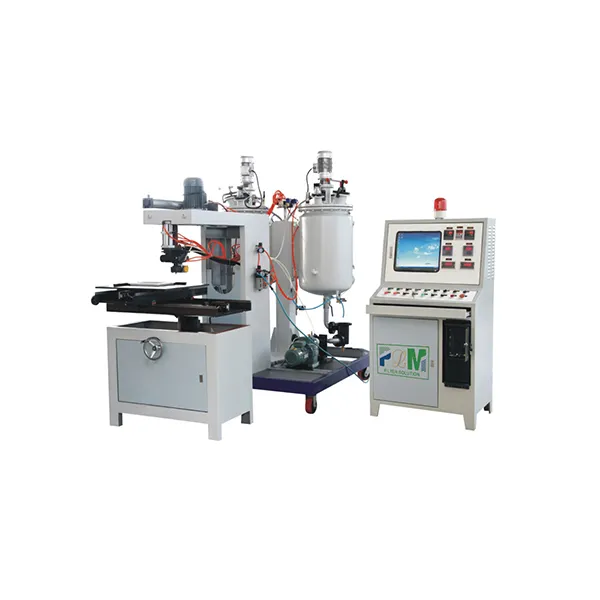Dec . 26, 2024 18:04 Back to list
CE Certification for Water Purification Systems and Their Importance in Safety Standards
CE Certification for Water Purification Systems
Water is an essential component of life, and ensuring its purity is critical for health, well-being, and safety. This has led to a significant growth in the demand for water purification systems worldwide. As this market expands, so does the necessity for robust standards and certifications that guarantee the safety and efficacy of these systems. Among the various certifications available, CE marking plays an important role in the European market.
What is CE Certification?
CE stands for Conformité Européenne, which translates to European Conformity. It is a certification mark that indicates a product complies with EU legislation and meets essential health, safety, and environmental protection requirements. CE marking is mandatory for certain products sold within the European Economic Area (EEA) and signifies that the product has undergone rigorous testing and evaluation.
For water purification systems, CE certification demonstrates that the device meets various regulatory standards put in place by the European Union. This includes directives related to safety, electromagnetic compatibility, and environmental performance. The certification process involves conformity assessment procedures, which may include product testing, quality assurance systems, and documentation demonstrating compliance with relevant standards.
Importance of CE Certification in Water Purification Systems
1. Consumer Safety Water purification systems are critical devices that directly affect human health. CE certification ensures that the systems have been tested for their safety and that they do not pose any risks to users. This is particularly important since these systems may be used in homes, schools, and public places.
2. Quality Assurance CE marking not only ensures compliance with safety standards but also indicates that the product meets specific performance criteria. Customers are more likely to trust and purchase products that bear the CE mark, knowing they have been subjected to precise assessments.
3. Regulatory Compliance CE certification helps manufacturers navigate the complex regulatory landscape in Europe. By obtaining this certification, companies can streamline their market entry processes and avoid legal pitfalls associated with non-compliant products.
4. Market Access Manufacturers looking to distribute their water purification systems within the European market must possess CE marking. This certification acts as a passport, granting access to a vast market that demands high-quality safety standards for consumer products.
5. Environmental Sustainability Many CE marking regulations align with directives aimed at reducing environmental impacts. For example, water purification systems that bear the CE mark are more likely to be tested for energy consumption and the presence of harmful substances, which promotes environmentally friendly practices.
ce certification water purification systems

The CE Certification Process
Obtaining CE certification for water purification systems involves several steps
1. Identifying Applicable Directives Manufacturers must first identify the EU directives relevant to their product. Common directives for water purification systems include the Low Voltage Directive, the EMC Directive, and the Ecodesign Directive.
2. Conducting Risk Assessment A thorough risk assessment is conducted to evaluate potential hazards associated with the product's use. This assessment helps determine necessary measures for mitigating risks.
3. Testing and Evaluation The product undergoes testing, often conducted by an accredited third-party testing laboratory. This testing verifies that the product meets essential performance and safety requirements.
4. Documentation Manufacturers must prepare a technical file that contains evidence of compliance, including design and manufacturing processes, test results, and installation guidelines.
5. Declaration of Conformity Upon successful testing and evaluation, manufacturers can create a Declaration of Conformity, which states the product meets all applicable requirements. This declaration must be kept on file and made available upon request.
6. Affixing the CE Marking Finally, the CE mark is affixed to the product, packaging, and accompanying documentation.
Conclusion
CE certification is a fundamental component in the manufacturing and distribution of water purification systems in the European market. By ensuring these devices comply with stringent health, safety, and environmental standards, CE marking not only protects consumers but also enables manufacturers to access a broader market. As the demand for safe and efficient water purification solutions continues to rise globally, the significance of CE certification will undoubtedly remain paramount. For both consumers and manufacturers, CE marking serves as a testament to quality and reliability in the essential pursuit of clean, safe water.
-
AI-Optimized Active Carbon Filter for Air Purifiers | 51 chars
NewsAug.02,2025
-
Premium Active Carbon Air Filter for Air Purifiers | Odor Removal
NewsAug.01,2025
-
Activated Carbon Air Filters: Ultimate Odor Removal for Purifiers
NewsJul.31,2025
-
PP Spun Filter Cartridge Making Machine for Efficient Filtration Solutions
NewsJul.29,2025
-
Active Carbon Air Filter for Air Purifier - Superior Odor & Pollutant Removal
NewsJul.29,2025
-
High Strength Orange PU Glue for Versatile Bonding Solutions
NewsJul.28,2025
